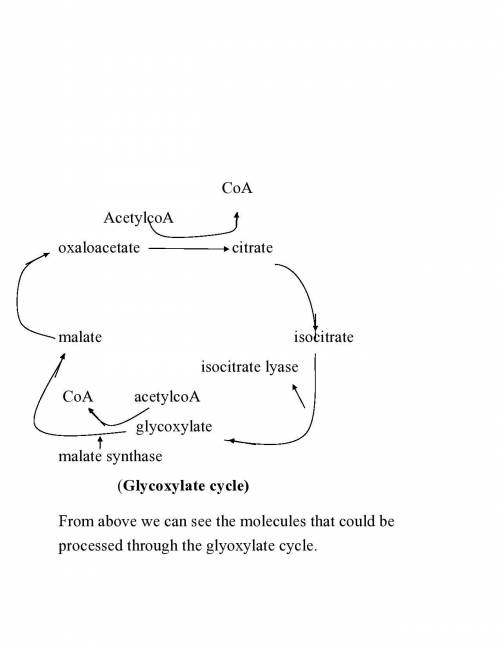
Biology, 13.12.2019 18:31 alexandrecarmene
Systemic fungal infections (e. g. candida and cryptococcus) and tuberculosis (mycobacterium) are on the rise. one of the reasons these organisms have high virulence is that they fare better following macrophage phagocytosis than other microorganisms. phagocytosis activates the glyoxylate cycle in fungi and mycobacteria, allowing them to use two-carbon substrates to sustain growth in an otherwise nutrient-poor environment of the phagolysosome.
a) suggest some likely molecules that could be processed through the glyoxylate cycle in this circumstance.
b) what enzymes are unique for this cycle?
c) does the glyoxylate cycle exist in animals? why?

Answers: 3


Another question on Biology

Biology, 21.06.2019 17:00
Mike was adopted, and his biological family history is unknown. although he is healthy, he would like some understanding of his genetic makeup, including potential health risks and genes that he could pass on to his children. mike has heard about commercial laboratories that can compare segments of your dna to those of people with common hereditary diseases in order to give you some idea of how susceptible you are to the diseases. the results of these types of tests are highly inconclusive. if mike's dna showed that he shares similarities in a segment of dna with people who have a given disease, his chances of developing that disease or passing it on to his children may be slightly elevated, but they are not 100 percent. these tests can cost more than $2,500 and are not covered by many insurance companies. do you think that mike should undergo the genetic tests? explain your answer. what are the potential pros and cons of having such tests done? describe how the availability of these genetic tests might affect the frequency of genetic diseases in individuals and populations.
Answers: 1

Biology, 21.06.2019 19:30
What kind of seafood would you expect to have the highest levels of mercury and why? kelp, because they use the sun to photosynthesize on the bottom trophic level. oysters, because they filter feed on plankton on a lower trophic level. small fish, because they eat plankton on a higher trophic level. sharks, because they feed on organisms on a higher trophic level.
Answers: 1

Biology, 21.06.2019 20:00
The process by which natural forces move weathered rock and soil brim one place to another is called
Answers: 1

You know the right answer?
Systemic fungal infections (e. g. candida and cryptococcus) and tuberculosis (mycobacterium) are on...
Questions























